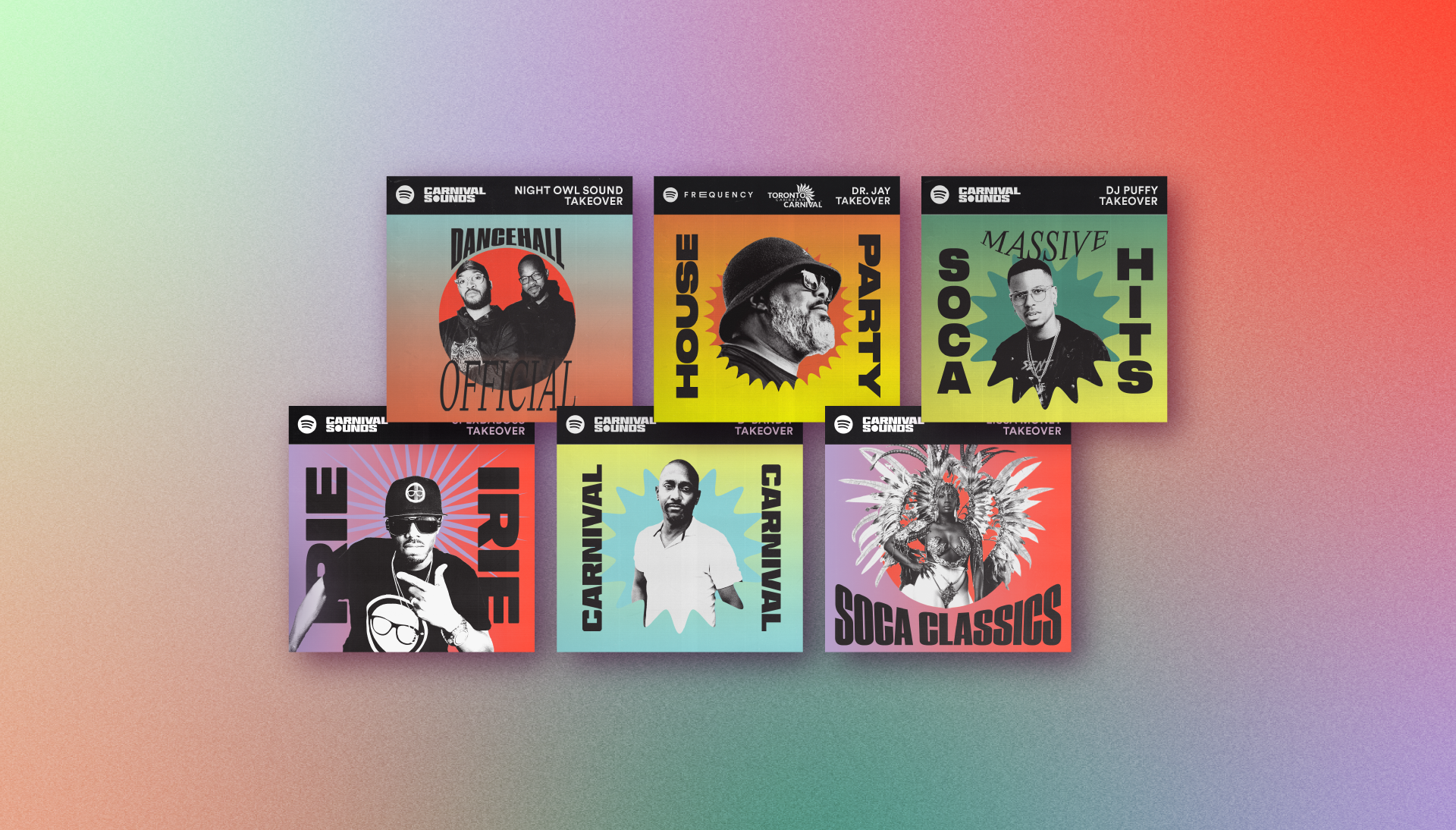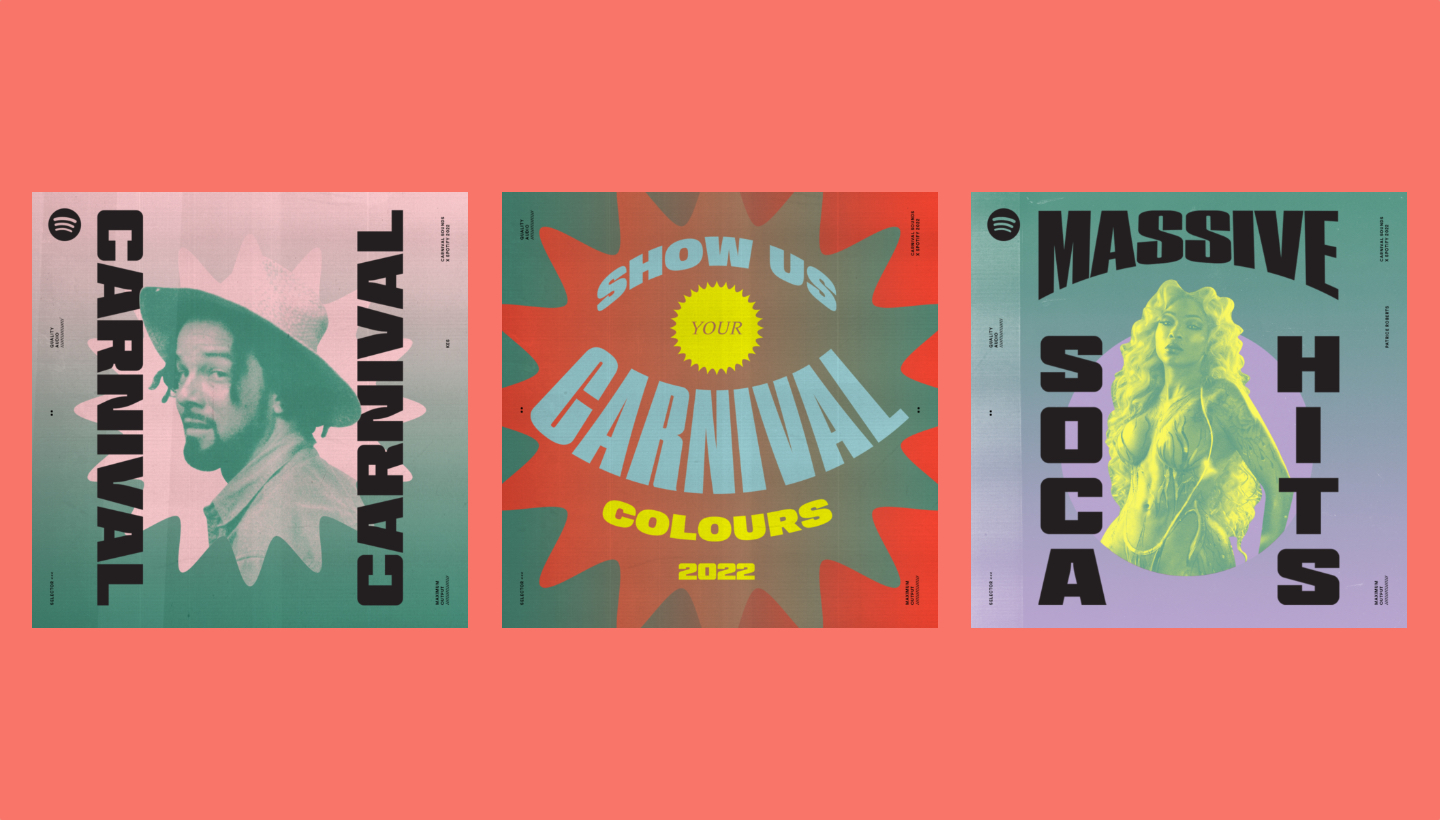
From Antigua, Grenada, Bahamas, and Barbados to Jamaica, St. Vincent, and Trinidad and Tobago, Toronto is home to a large Caribbean community from many islands and regions. It’s hard to deny the impact that such a large community has had on the city, particularly its music scene. Genres like calypso, soca, chutney, and reggae are an intrinsic part of Toronto’s framework. And at no time does that become truer than during the Toronto Caribbean Carnival, an annual monthlong event that celebrates the vibrant rhythms and rich heritage of the Caribbean.
Spotify is honoring the impact of Caribbean culture in Canada through an official sponsorship with the Toronto Caribbean Carnival, the event’s first official sponsorship by a music streaming service. And we’re kicking things off with some of the most prominent artists, DJs, and creators with Carnival Sounds—a global home for all things Caribbean, featuring curated playlists celebrating the sounds of reggae, dancehall, soca, and all of the vibes in between.
Spotify’s Frequency initiative is also teaming up with the “Soca Prince,” Dr. Jay, and the legendary Soca or Die party for our first live event at Carnival. Attendees can catch us at the Cabana Pool Bar in Toronto on August 3 to celebrate.
Toronto’s Caribbean Carnival has been a part of the city’s history since 1967 and is billed as the biggest Carnival event in North America. Revelers come from all over to celebrate the spectacular display of costume, sound, and color that moves through the city. The event ends with the grand parade on Emancipation Day weekend, which marks the full emancipation of enslaved people in Canada in 1838. And there’s no shortage of music. Past musical guests have included the likes of Machel Montano, Wyclef Jean, Diddy, KES the Band, Wuss Ways, Lil Natty, and Thunda.
“Canada is about diversity and inclusion, and that’s why our theme this year is Diversity and Culture Live Here,” CEO of Toronto Caribbean Carnival Mischka Crichton told For the Record. “In the Caribbean, Carnival is a national celebration and holiday. Every island has its own unique way of celebrating. And what makes the Toronto Carnival particularly special is that it’s representative of so many people. It’s the most diverse Caribbean Carnival in the world.”
“It’s also important for our young people to see themselves reflected in the multicultural kaleidoscope that is this country.” she said.
The Carnival Sounds playlists include:
- House Party – curated by the legendary Soca Prince himself, Dr. Jay
- Massive Soca Hits – put out by World DJ Champion DJ Puffy
- Irie – masterfully curated by world-renowned DJ and Toronto radio pioneer SPEXDABOSS
- Carnival – by one of Toronto’s best, D’Bandit
- Soca Classics – from award-winning DJ Lissa Monet
- Dancehall Official – hosted by Night Owl Sound with Toronto’s OVO Mark x OVO Noel
For the Record caught up with Dr. Jay to talk about Carnival and his connection to soca.
What’s your personal connection to Carnival?
My mom (may she rest in peace) was born in Guyana and my dad is from Trinidad and Tobago. I was raised within the culture, and from as far back as I remember, Carnival was a huge presence in our lives. I played mas and even participated in the big costume presentations for Kiddies Carnival. So for my sister and me to now have a section within Saldenah, the band that has won the most Band of the Year titles at Carnival, is such a full-circle moment for me.
From reggae to soca and everything in-between, the Caribbean is rich with a diverse range of musical genres. Which do you most strongly connect with and why?
I mean, I am “De Soca Prince,” so soca music, for sure. *laughs*
My strongest connection is probably to the older music. I’ve called it Tanty Tunes or Big People Music. I can remember hearing Lord Kitchener’s “Sugar Bum Bum,” or “Lorraine” by Explainer, and seeing how everyone would react to those classics at house parties and family get-togethers. I’m also drawn to newer soca that’s rich in lyrics and melodies. Honestly, I just love the overall positive energy that soca music embodies.
What are some songs attendees can expect to hear on your set?
It really depends when I’m playing. No two sets are identical because you never know what the DJ before you is going to play. However, I try to play soca from across the Caribbean. So whether it’s “The A List” from Pumpa or Adam O’s “Warming Up (Top Soil Riddim)” to the Trinidad and Tobago road march “Hard Fete” by Bunji Garlin, just know that my goal is to make you dance and wine up yuh waist!
How do you honor your own Caribbean heritage during Carnival and year-round?
This is my life. I’m not the type of DJ who only represents my Caribbean heritage during Carnival. This is 24/7/365. I play soca and Caribbean music all year long, and some of my most successful events take place in the middle of winter! I’ve spotlighted artists, bands, and international DJs throughout the year in Toronto and have been fortunate enough to travel the world thanks to soca. From Australia to Dubai, from Hong Kong to Berlin, it’s mind-blowing when I think about all the places I’ve DJed, and I owe it all to sweet soca music.
Get in the Carnival vibe with Dr. Jay’s House Party playlist.








Recent Comments